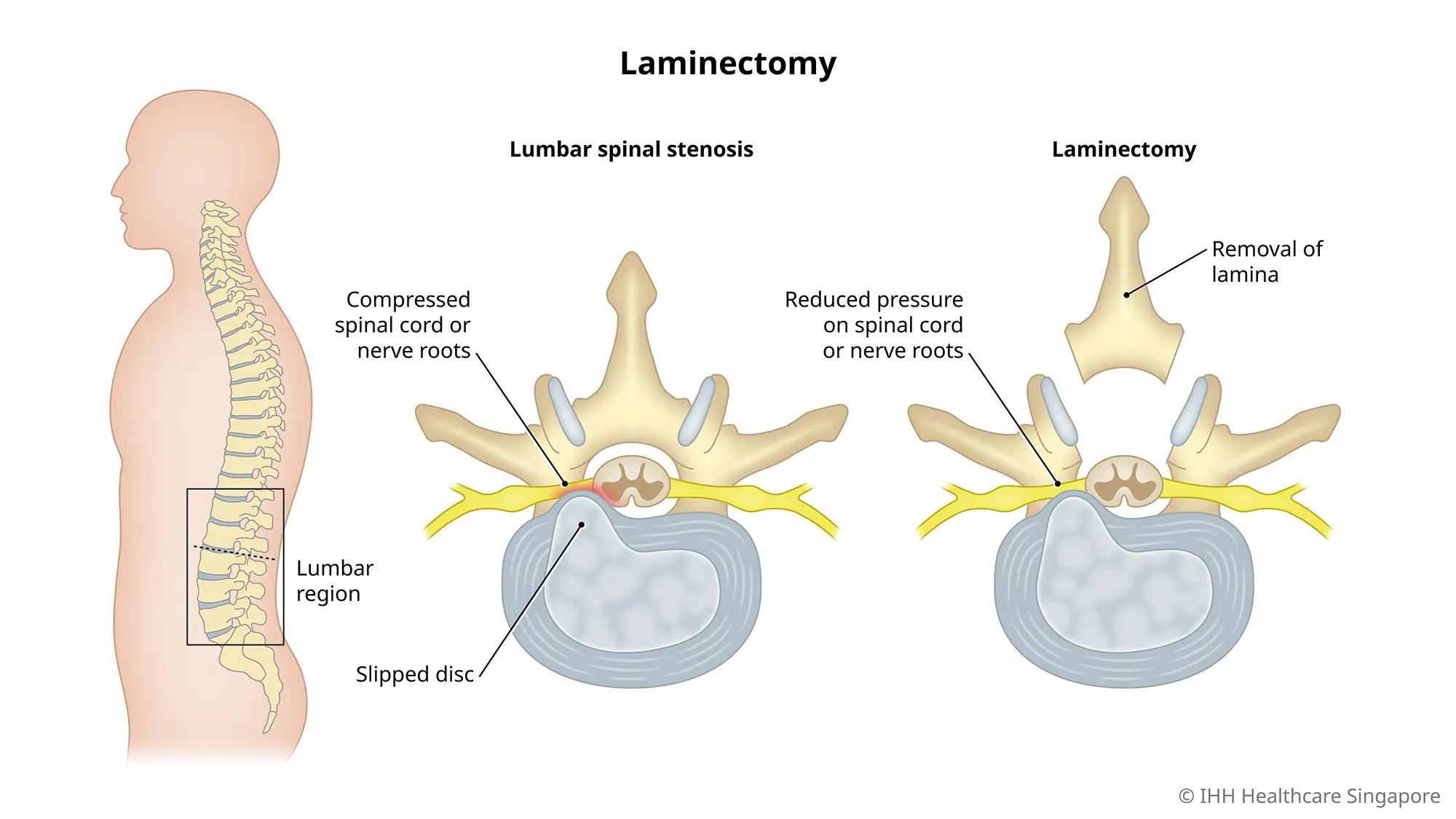What is a laminectomy?
Laminectomy, also called decompression laminectomy, is a surgical procedure to reduce the pressure on the spinal cord or spinal nerve roots caused by spinal stenosis.
Spinal stenosis is the narrowing of the spinal canal. The condition puts pressure on your nerves or spinal cord, which leads to pain, numbness, or weakness in the legs, back, neck and arms.
How it works

In a decompression laminectomy, surgery is done on the spine to remove the rear portion of one or more spinal bones known as lamina, and a thickened layer of the ligament known as the ligamentum flavum.
By removing these parts, the spinal canal is enlarged and pressure on the spine is relieved. This, in turn, helps to relieve back pain.
Why do you need a laminectomy?
Spinal laminectomy reduces the symptoms caused by pressure in your spine and helps you return to normal activities.
Laminectomy can also be used to treat spinal injuries, herniated discs (slipped discs) and spinal tumours.
What are the risks and complications of a laminectomy?
Decompression laminectomy is considered to be a low-risk procedure that is generally successful in relieving the symptoms of spinal stenosis. However, like any other surgery, it carries a small risk.
The surgical risks include:
- Bleeding
- Blood clots
- Leakage of spinal fluid
- Nerve injury
- Wound infection
The majority of patients see an improvement in symptoms after 6 weeks. However, for some patients, the pain may persist or return.
How do you prepare for a laminectomy?
Your doctor will brief you on the full procedure before your operation, which may include:
- Avoiding food and drink from the night before
- Wearing loose, comfortable clothing so you can dress easily after the procedure
- Arranging for a ride home
What can you expect in a laminectomy?
Decompression laminectomy is performed under general anaesthesia. You will be intubated with ventilator support.
During the procedure
During the procedure, you will lie face-down. Your surgeon will make a small incision in your back to access your spine.
Once the spine is exposed, your surgeon will cut away any bone or spurs that are compressing the nerves. After the necessary bone has been removed, bone grafts will be inserted and held in place with screws.
Your surgeon may also perform additional procedures such as a spinal fusion to stabilise the spine. This means that two or more vertebrae will be fused together, to stabilise the spine.
Care and recovery period for a laminectomy
Your doctor may prescribe medication for pain relief and recommend physiotherapy for the patient to maintain and improve on core strength and flexibility.
After you have returned home, you will need to:
- Continue taking pain medication
- Avoid sitting or standing for long periods in order to avoid blood clots
- Keep the operation site clean and dry to avoid infection (ask for step-by-step instructions)
- Look out for any sign of infection such as fever or swelling at the incision site and seek medical advice if needed
You will be asked to return in approximately 2 weeks for the stitches to be removed.
During your recovery, you should:
- Avoid driving
- Limit any activities that require you to bend or lift items
- Avoid strenuous activities until the core and back muscle strength improves
Desk work and light housekeeping may be possible after a few days or weeks.
Recovery time differs for every individual. Do discuss the specific dos and don’ts of your recovery plan with your doctor.
Your doctor will advise you when you are ready for light exercise and physiotherapy.






